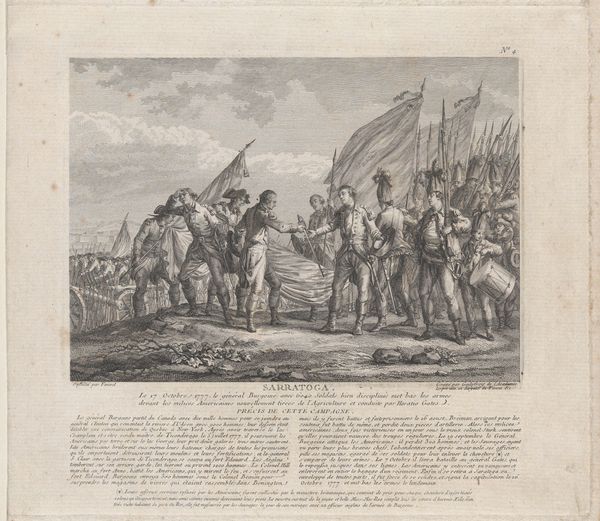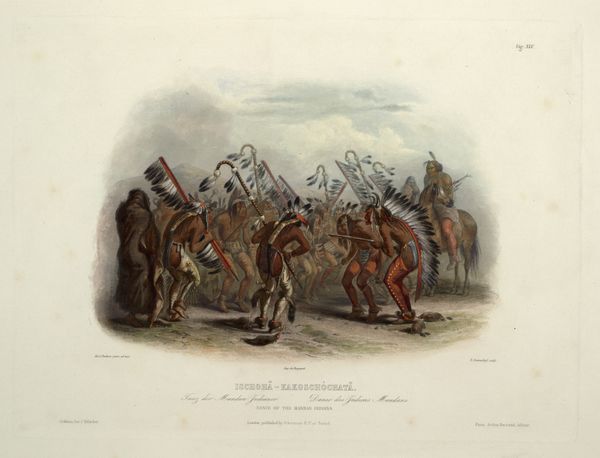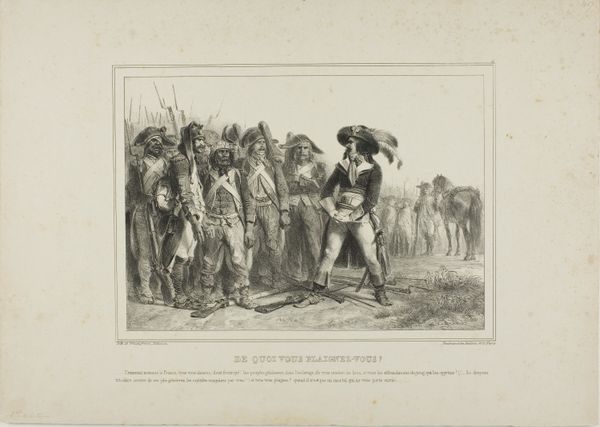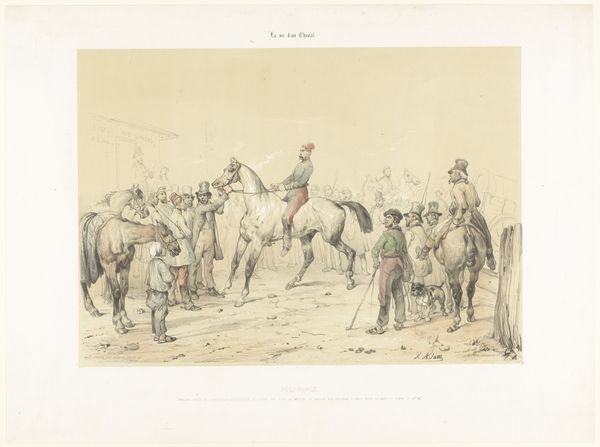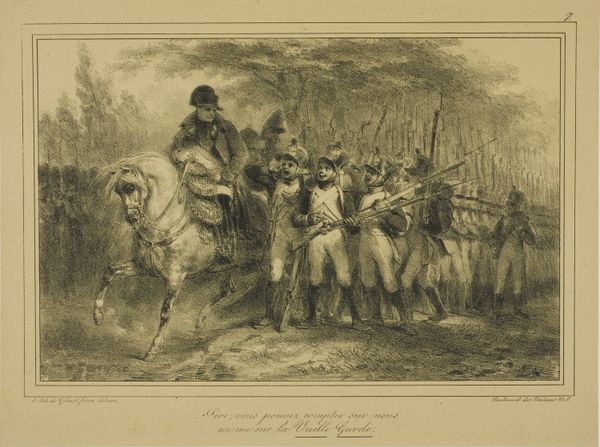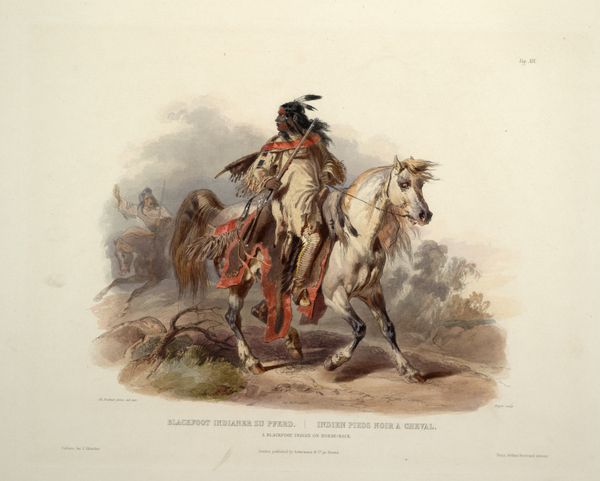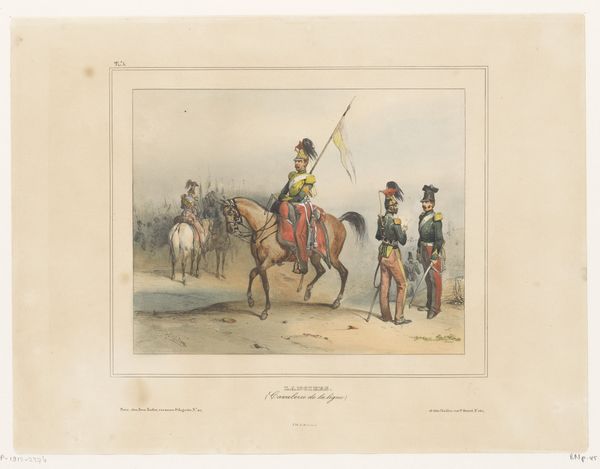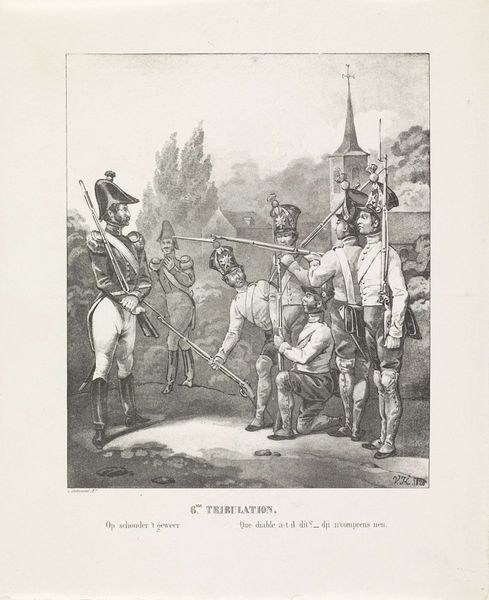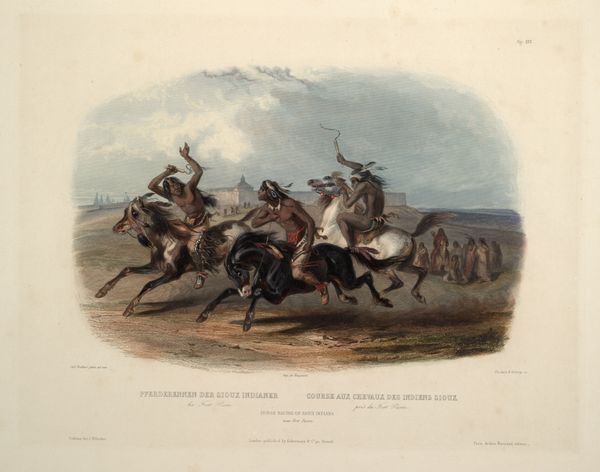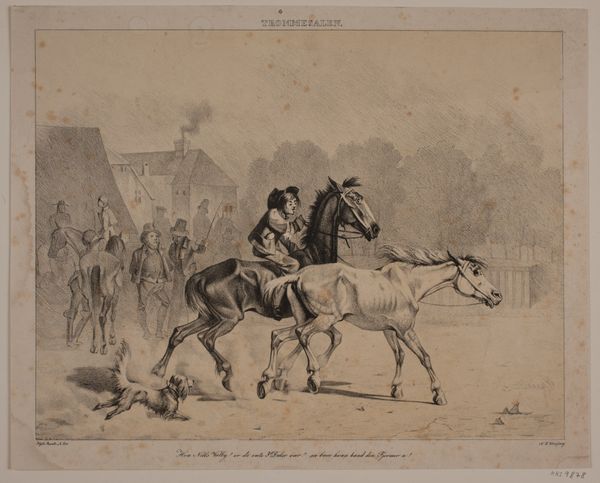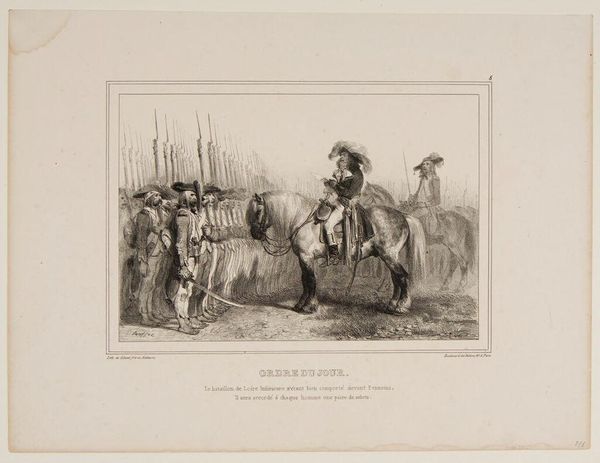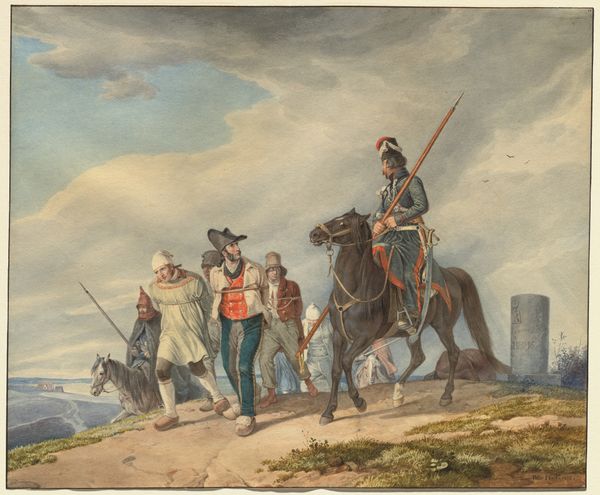
The Travellers Meeting with Minatarre Indians near Fort Clark, plate 26 from Volume 1 of 'Travels in the Interior of North America' 1843
0:00
0:00
karlbodmer
Private Collection
lithograph, print
#
water colours
#
lithograph
# print
#
landscape
#
oil painting
#
watercolour illustration
#
watercolor
#
indigenous-americas
Copyright: Public domain
Curator: Here we have Karl Bodmer’s 1843 print, “The Travellers Meeting with Minatarre Indians near Fort Clark,” plate 26 from his ‘Travels in the Interior of North America’. It’s a remarkable visual record of a pivotal encounter. Editor: The pale, almost washed-out palette gives the scene a sense of quiet reserve. Note the contrast between the open, rolling landscape in the background and the stark wooden fort that dominates the center. Curator: Indeed, this work provides an important perspective on early 19th-century encounters between European travelers and Indigenous peoples. It highlights themes of cultural exchange, frontier expansion, and the power dynamics inherent in these interactions. Consider the ways in which the artist frames the negotiation scene as a moment of both curiosity and potential conflict. Editor: And what is intriguing is how that negotiation is structured through implied lines; the meeting is carefully arranged along a single plane and uses the wooden structure to act almost like a stage setting. Look at how the men on the left mirror and echo each other in visual ways. Curator: This meeting near Fort Clark reflects a critical juncture in American history. Bodmer's journey was financed and directed by Prince Maximilian zu Wied-Neuwied to record Native American culture before westward expansion forever changed the face of the continent. This historical intention is visible in the attention Bodmer paid to realistic representation. Editor: There is a powerful story of material contrast told here: consider the sleek coats of the visitors against the Indigenous population's detailed raiment of furs and feathers, the natural ornamentation against the smooth, produced materials of the colonizers' garments. Curator: It is precisely these details that render it valuable: the rendering of cultural difference—not as mere exotica but as intricate systems of meaning. Editor: True. One might ponder how that same attention to visual data works on an expressive level as well. Curator: Ultimately, it serves as both historical record and artistic interpretation. Editor: I would simply add that it’s also a lesson in form—one beautifully orchestrated arrangement of light, line, and texture that lingers long after we’ve left it.
Comments
No comments
Be the first to comment and join the conversation on the ultimate creative platform.

